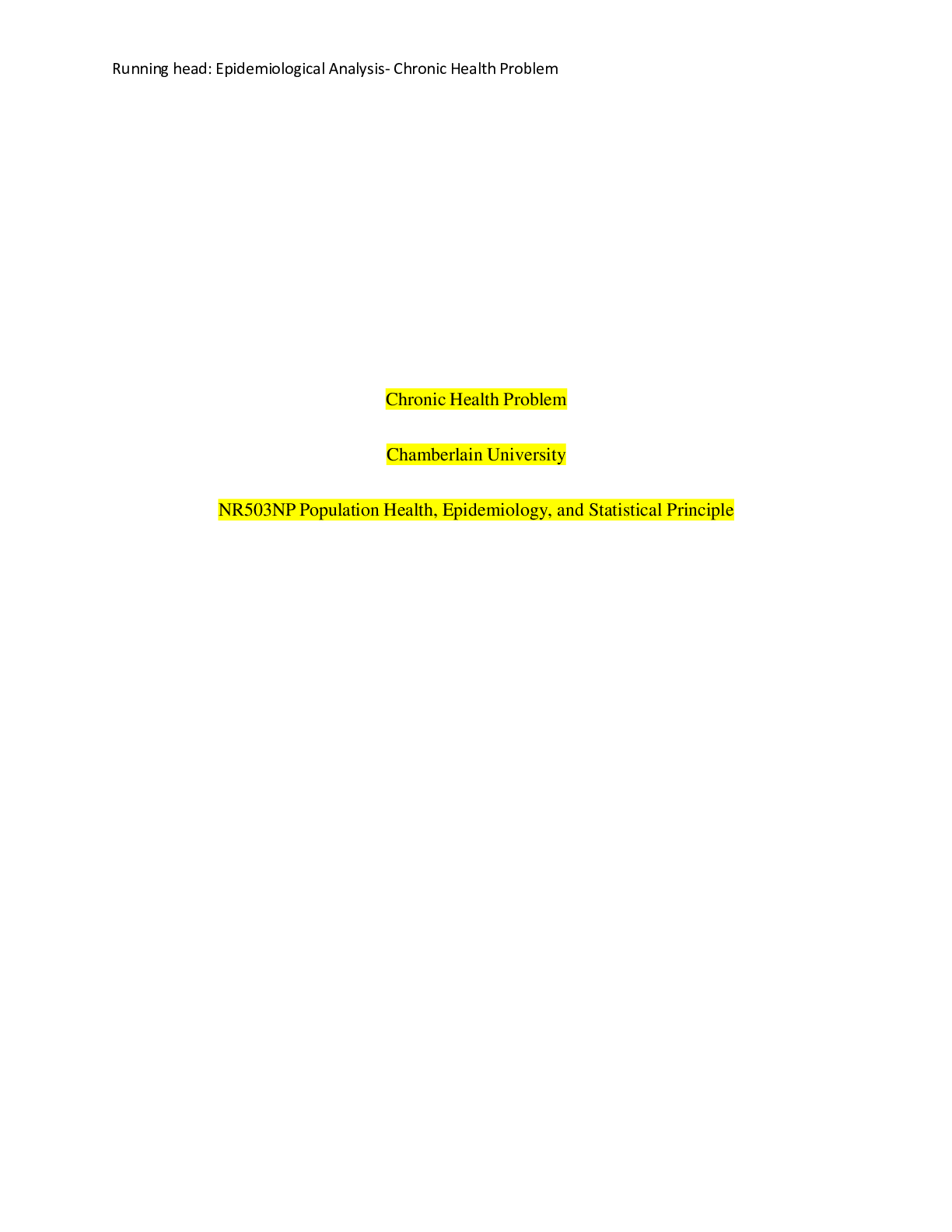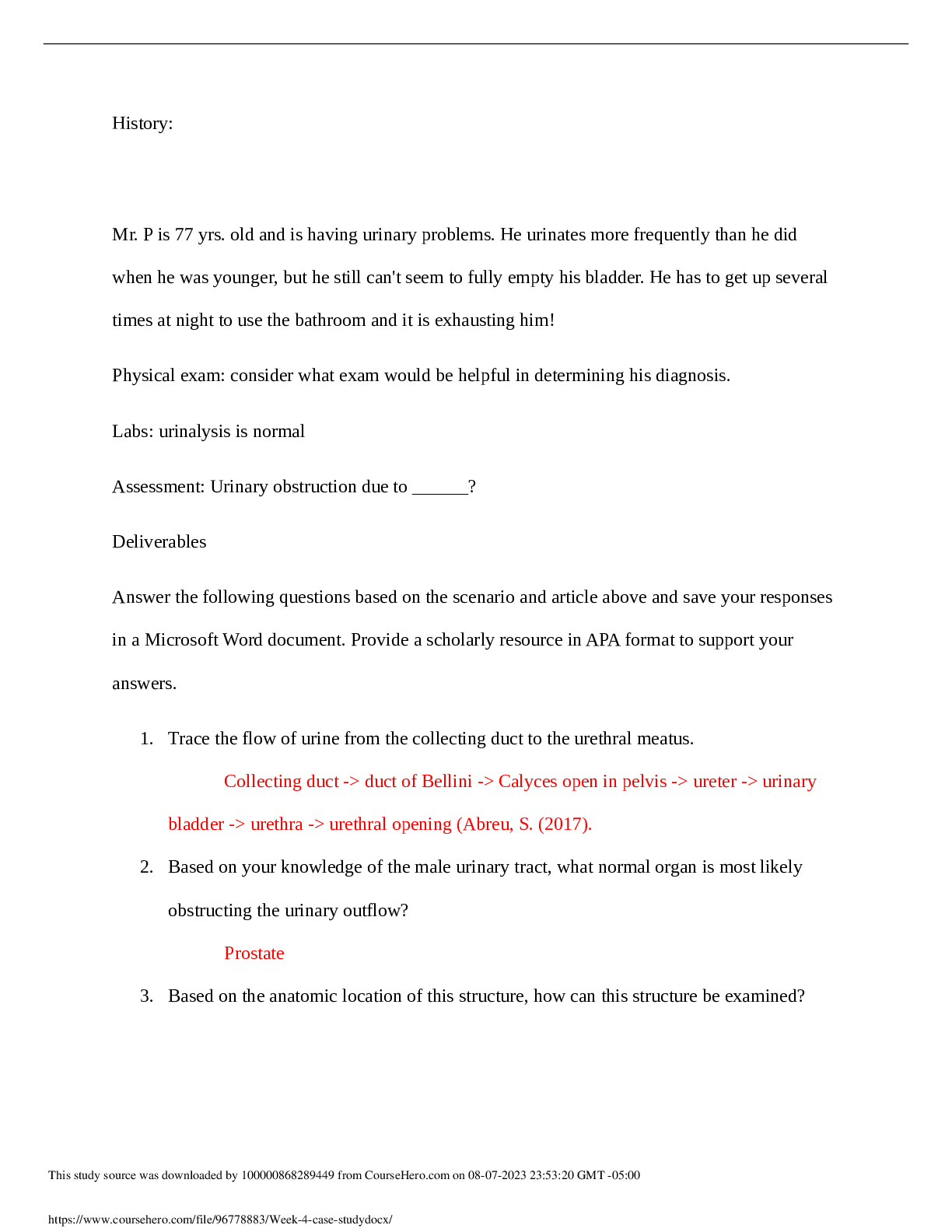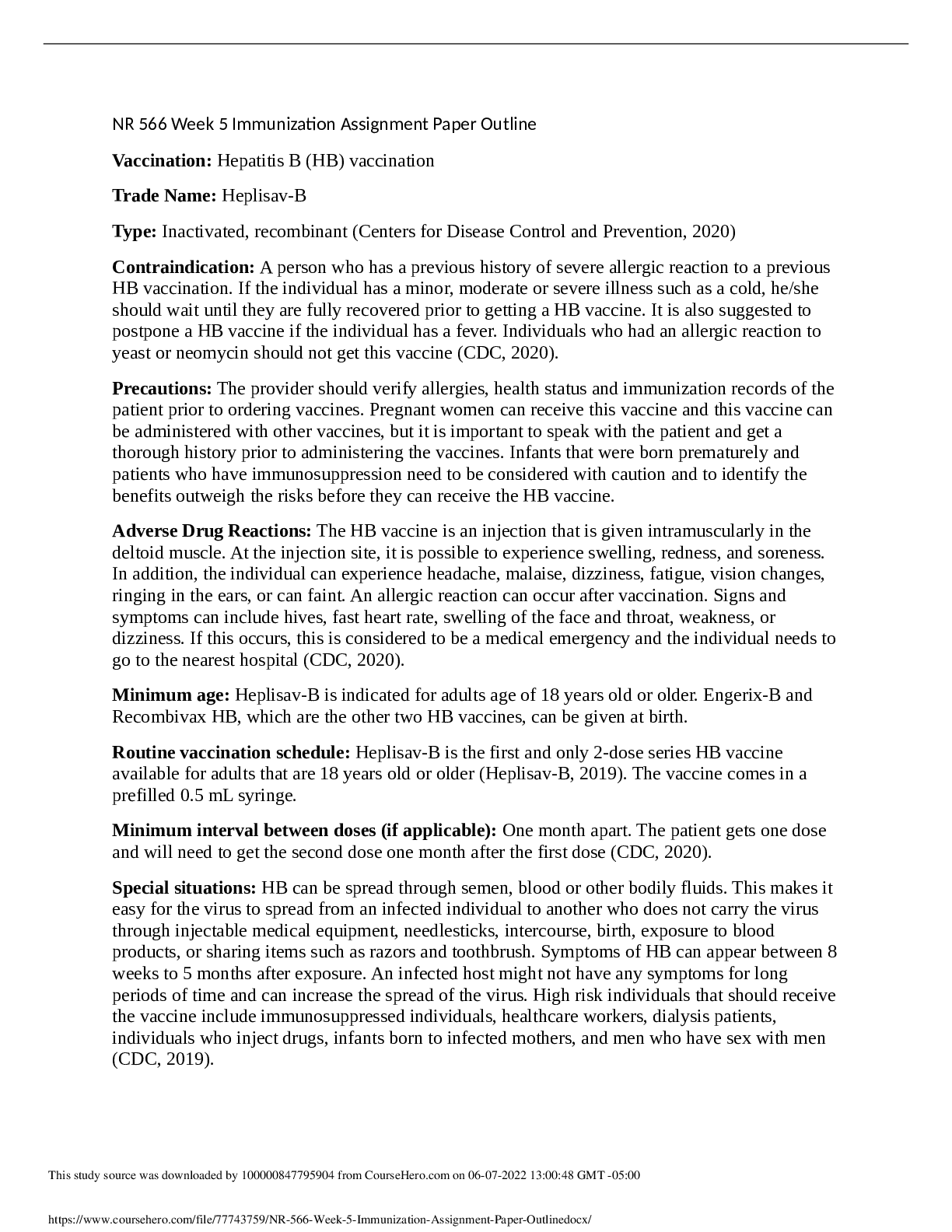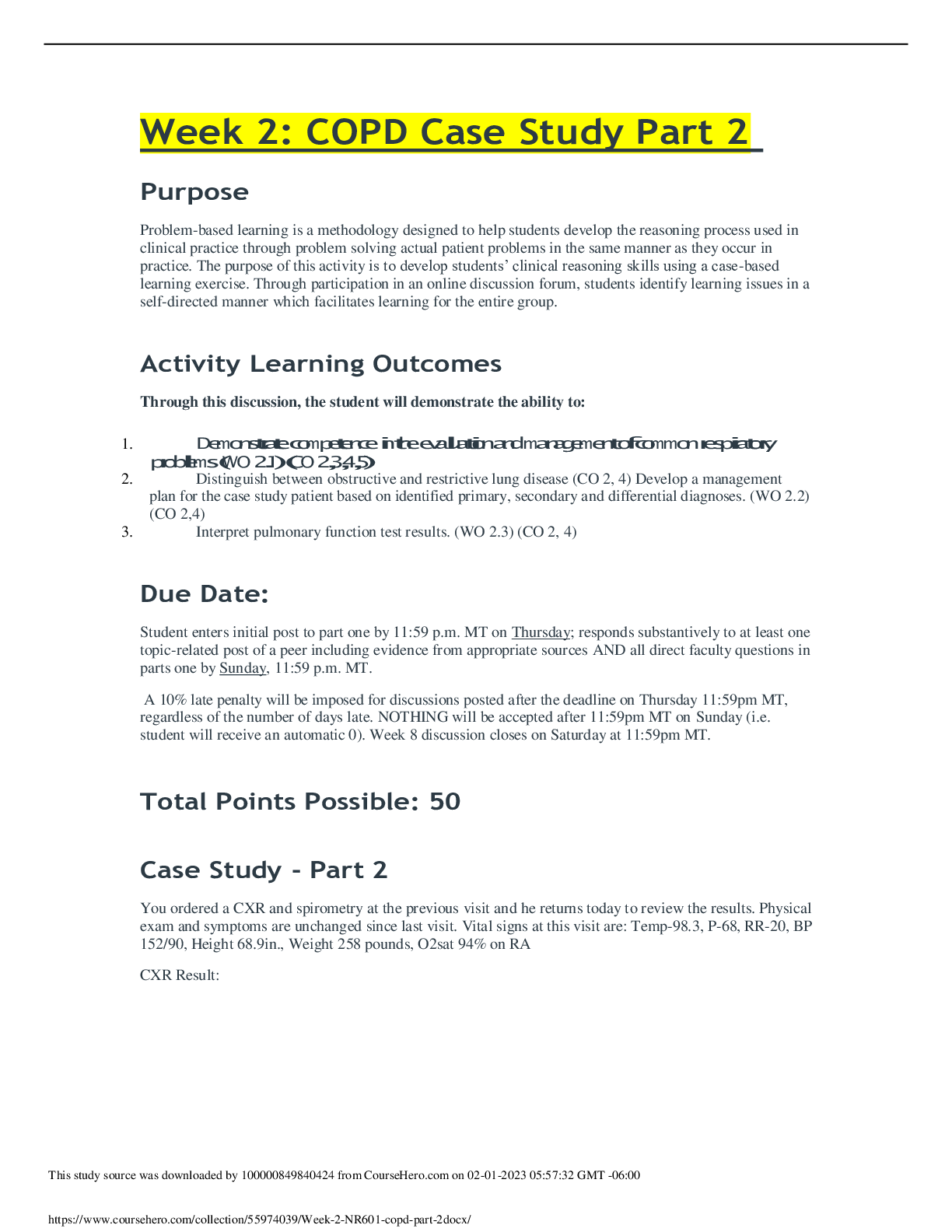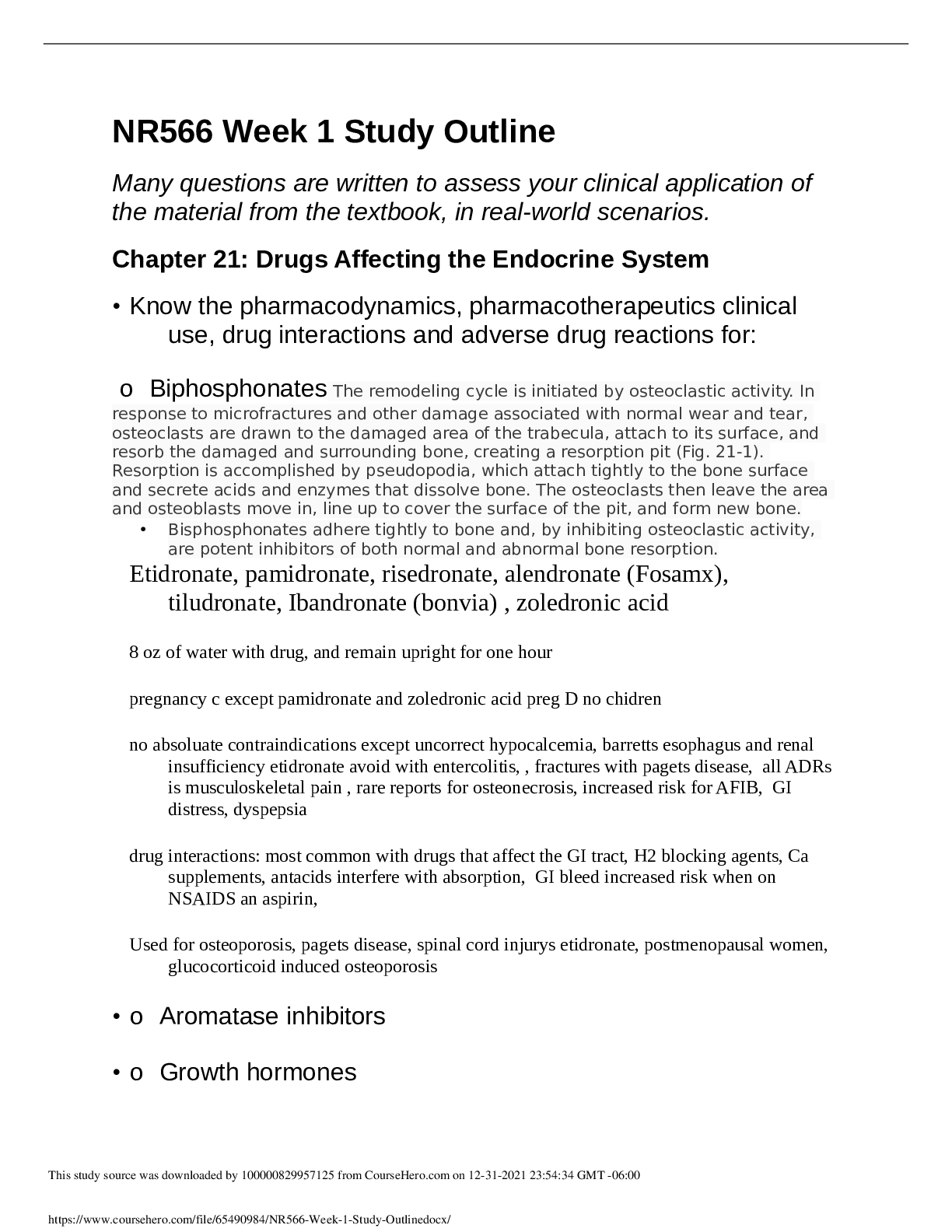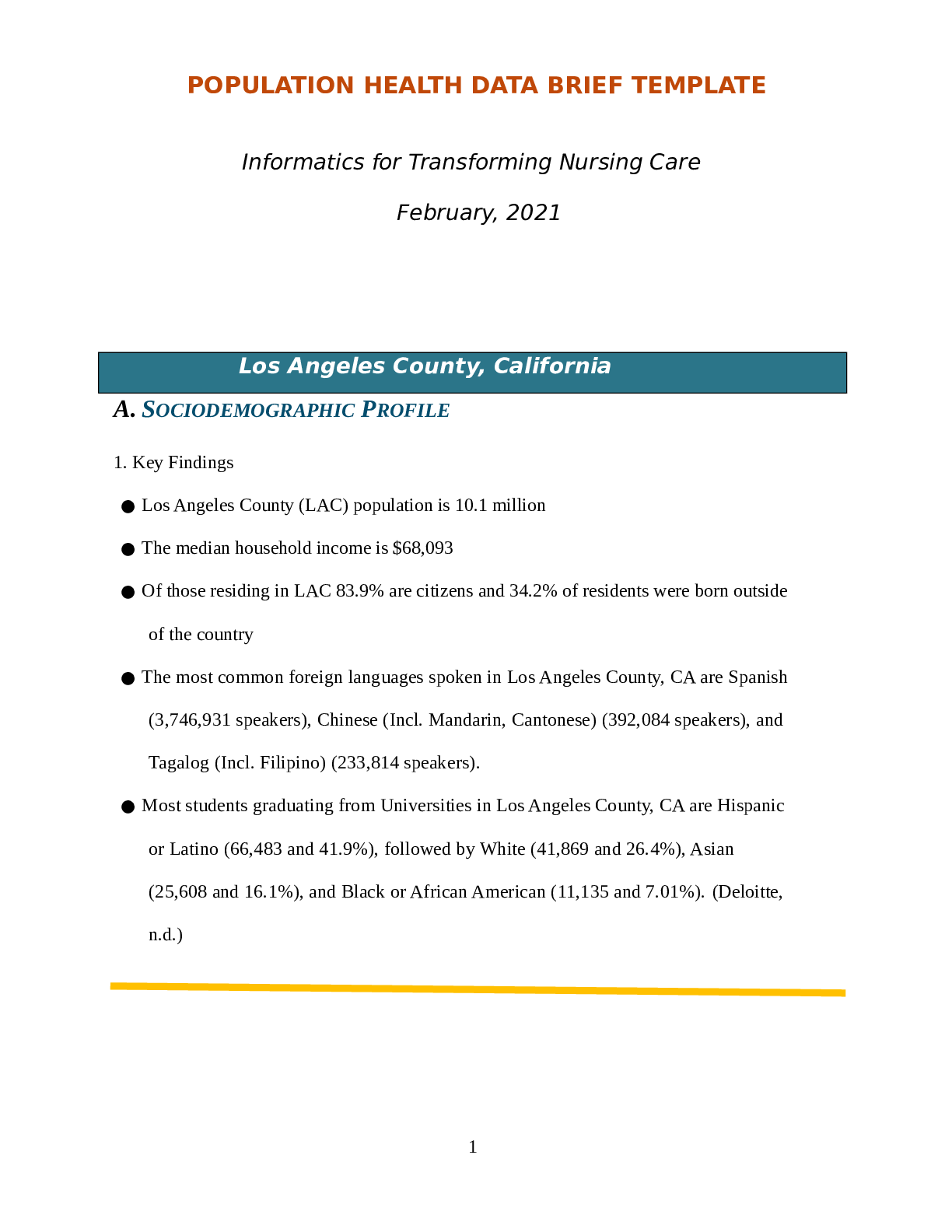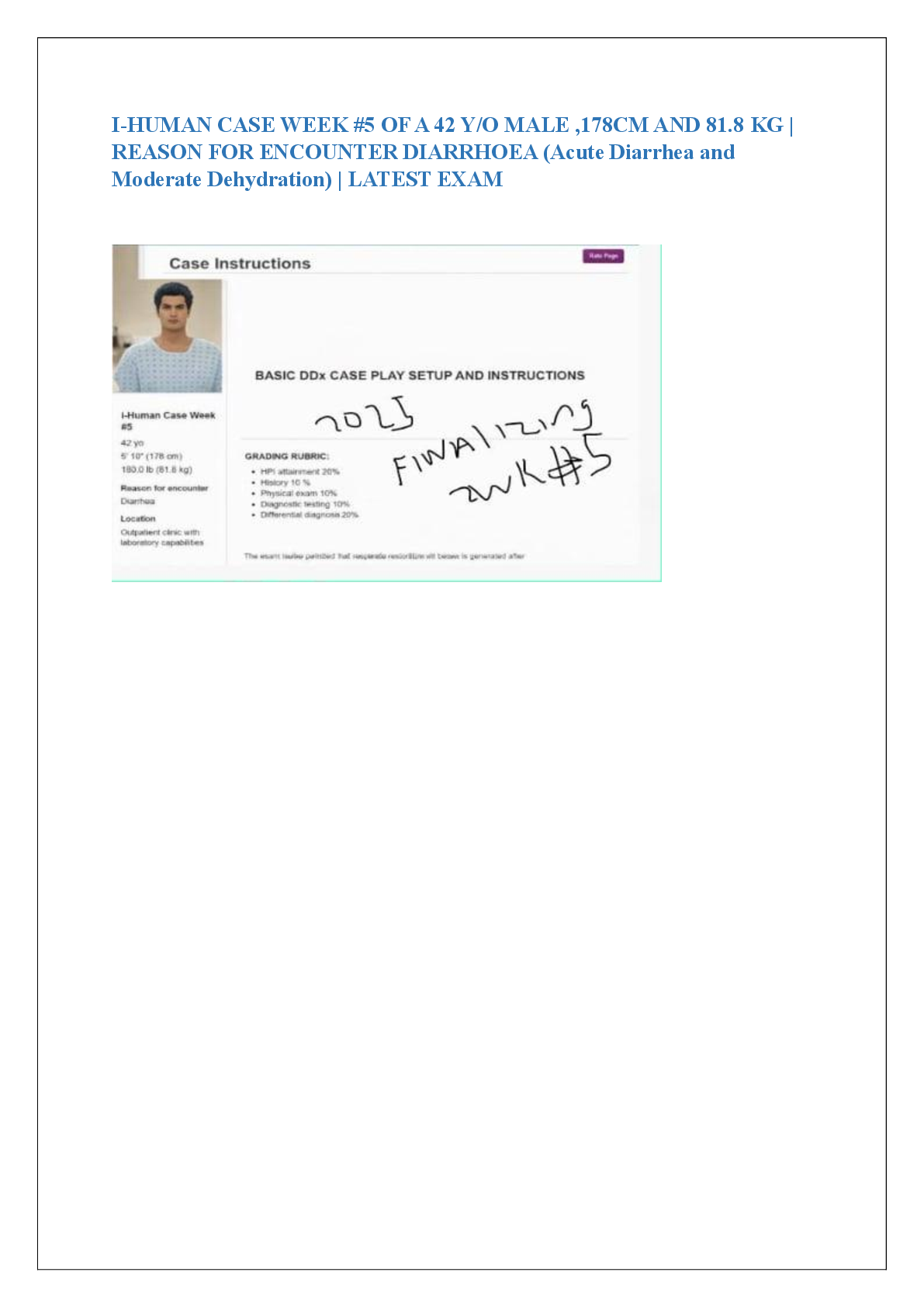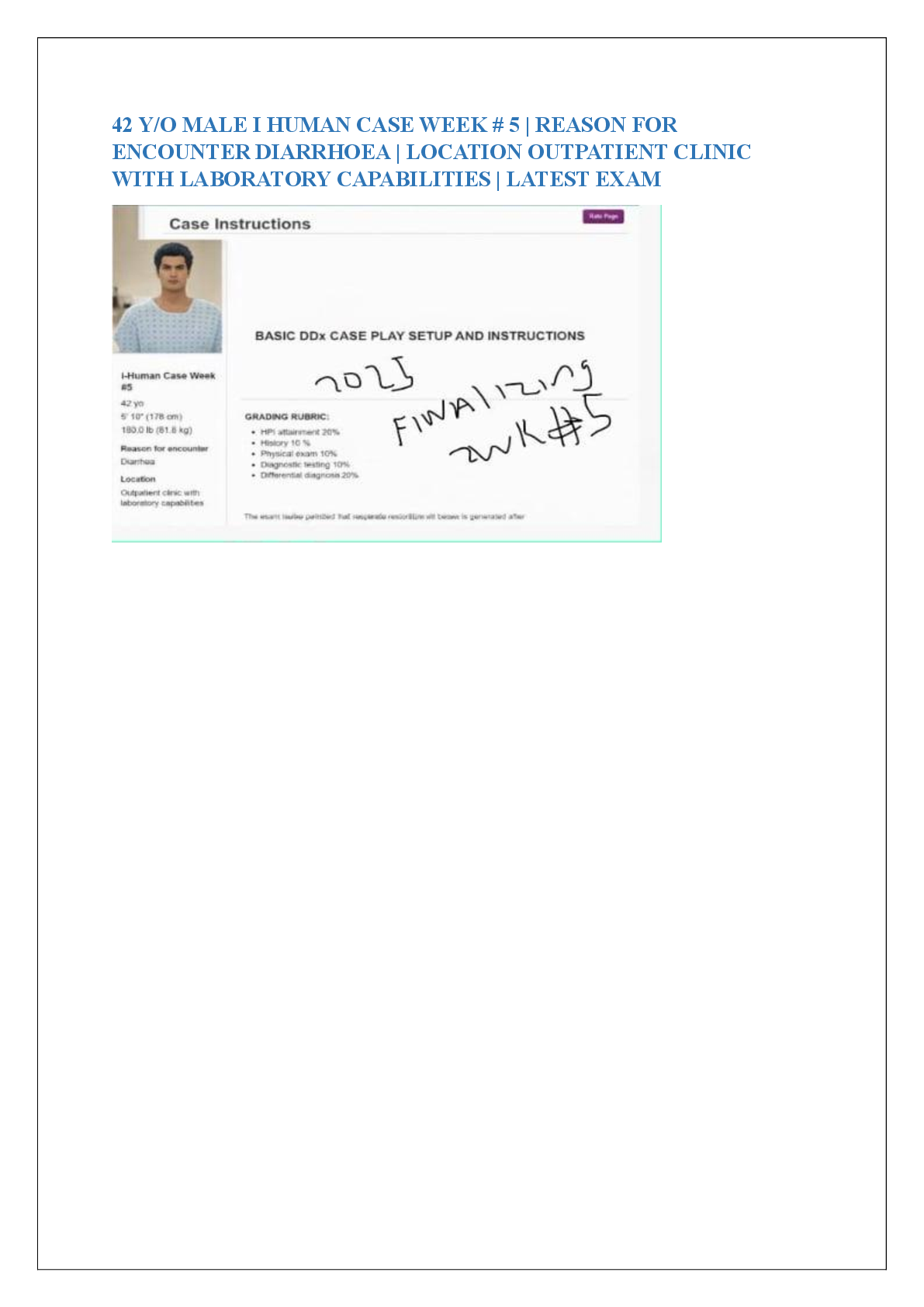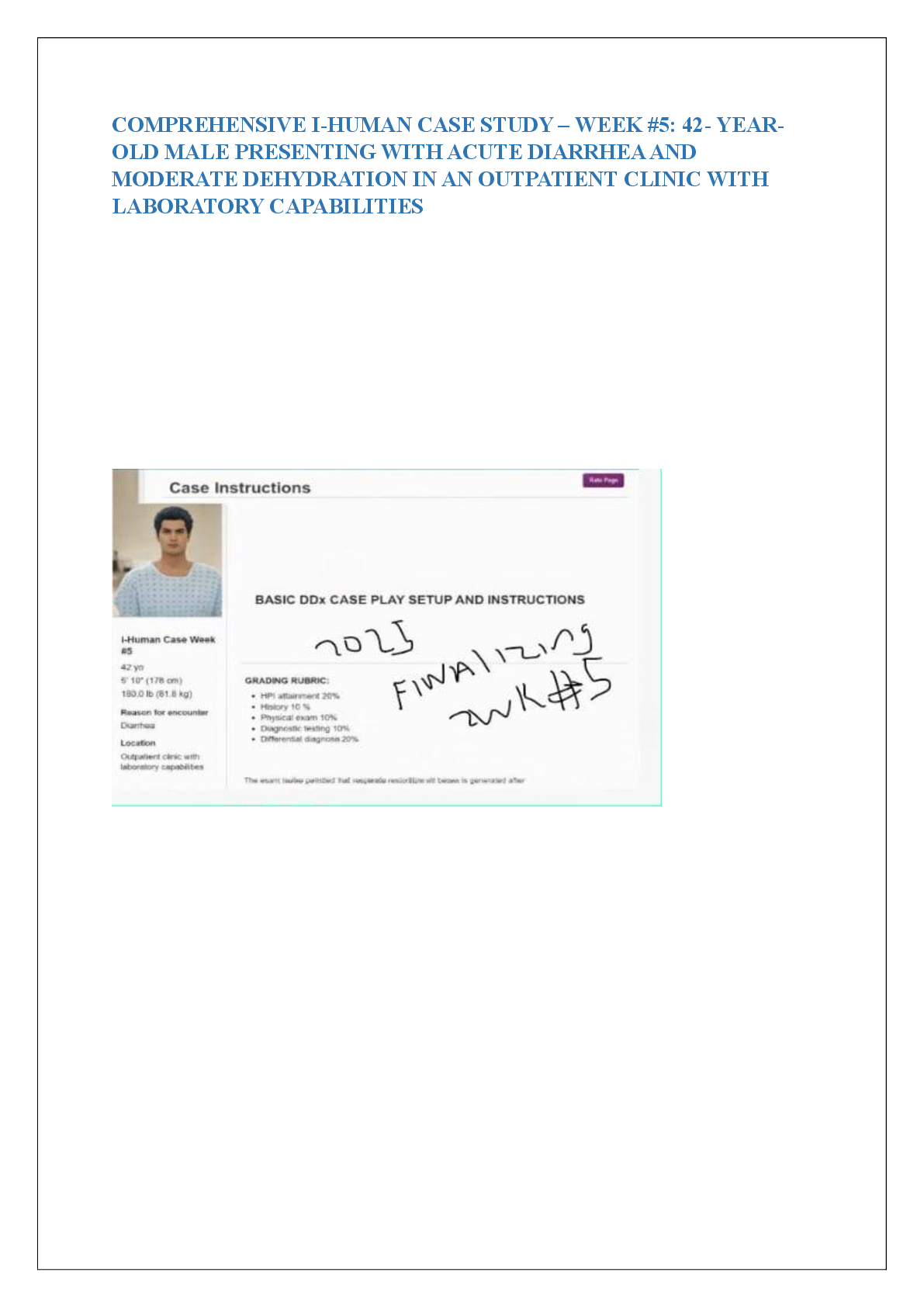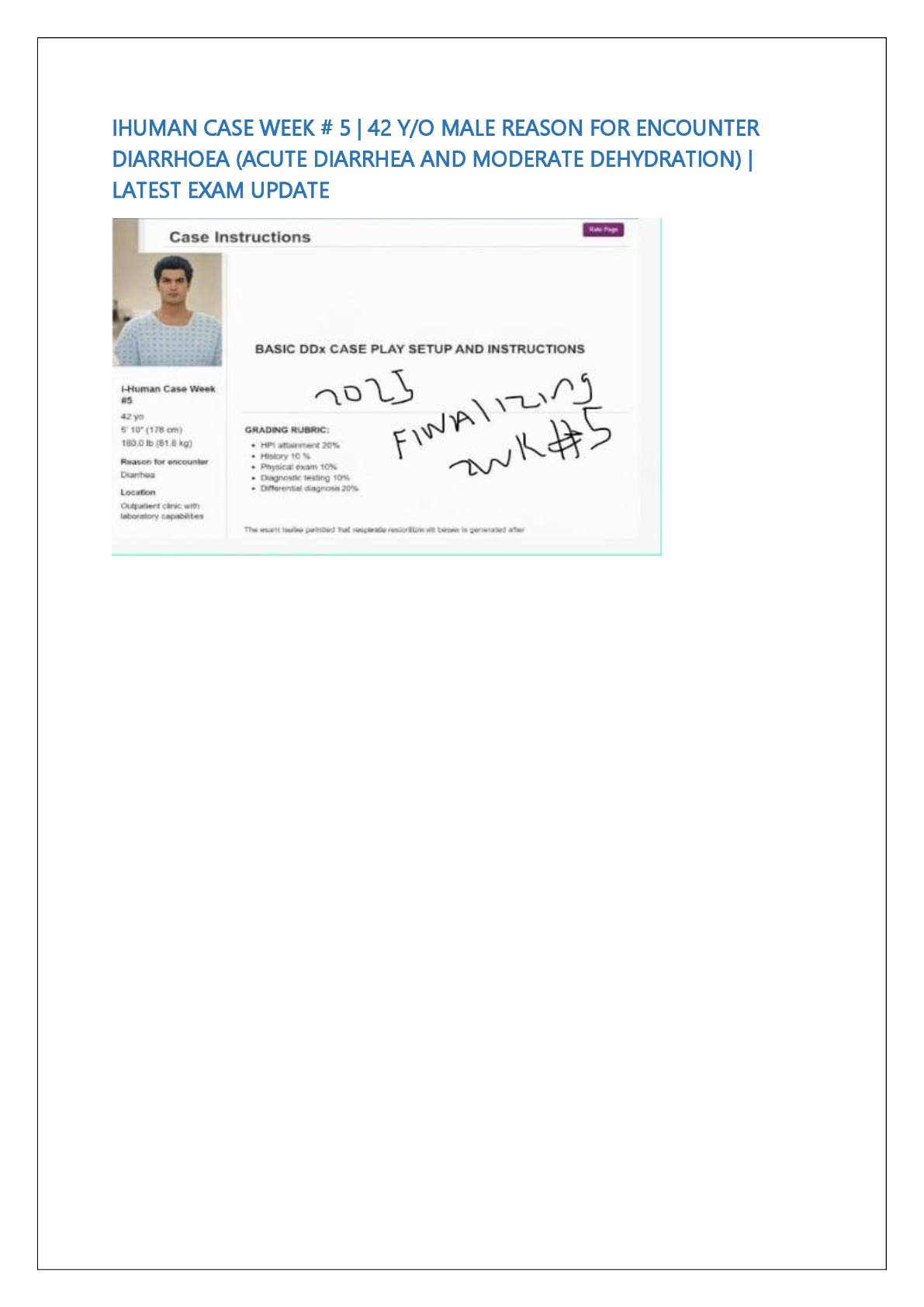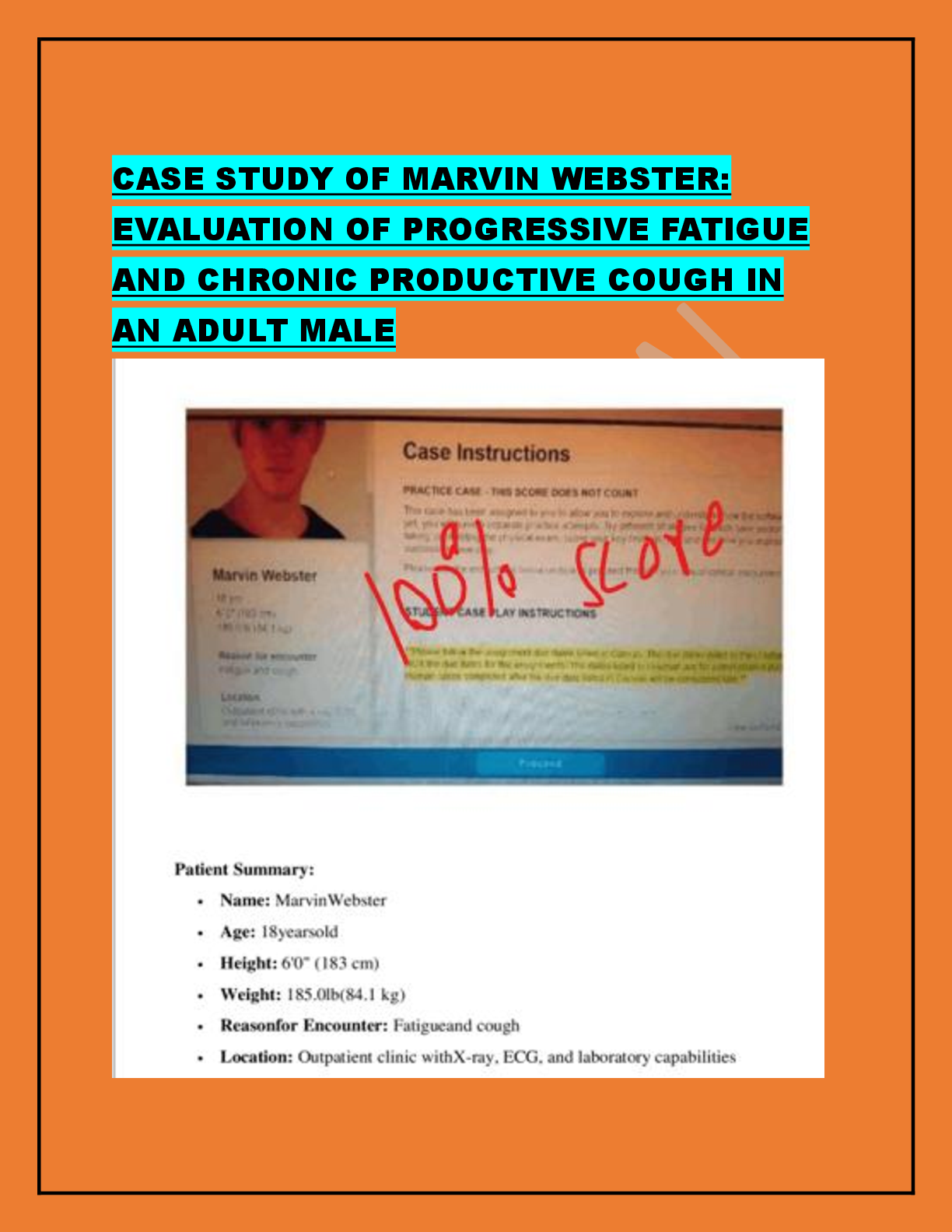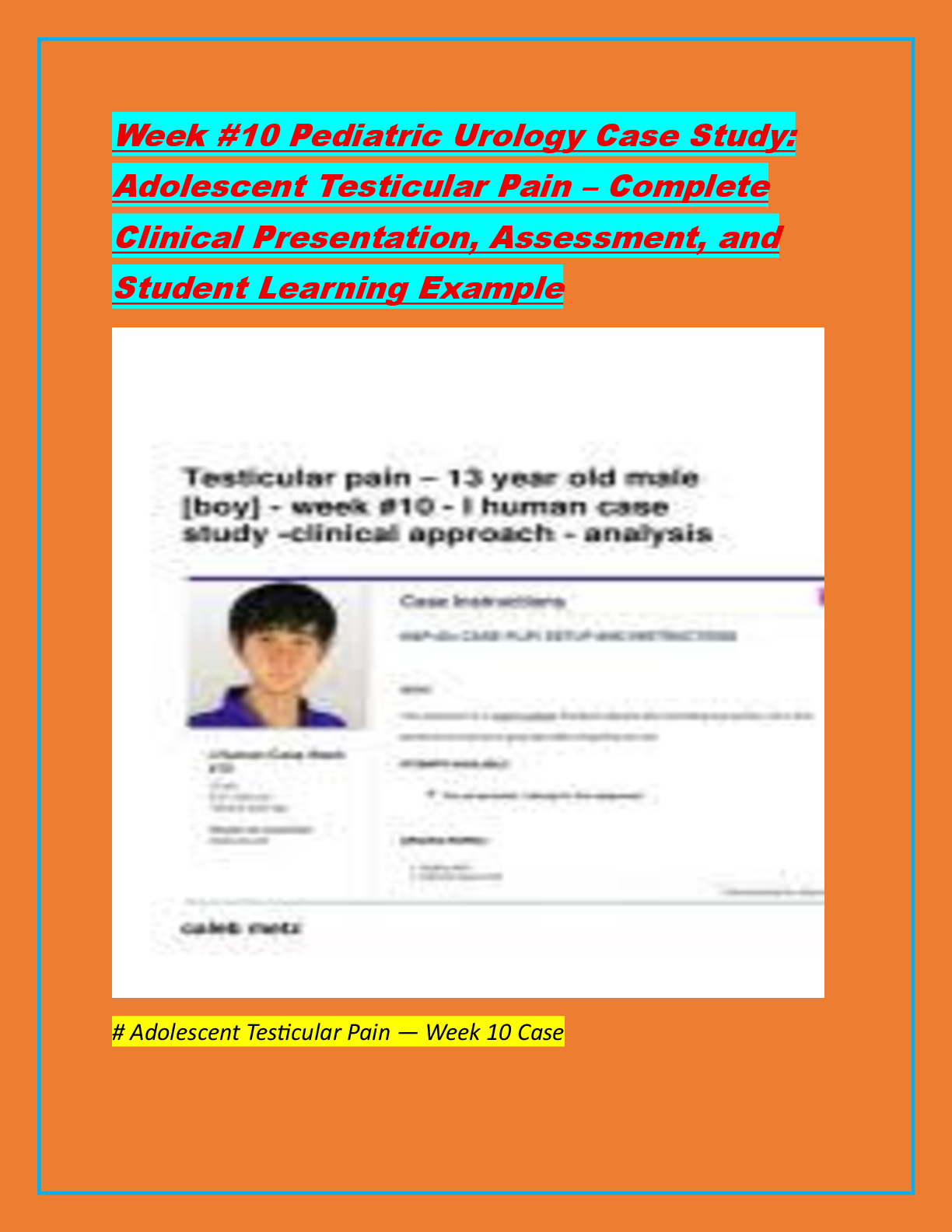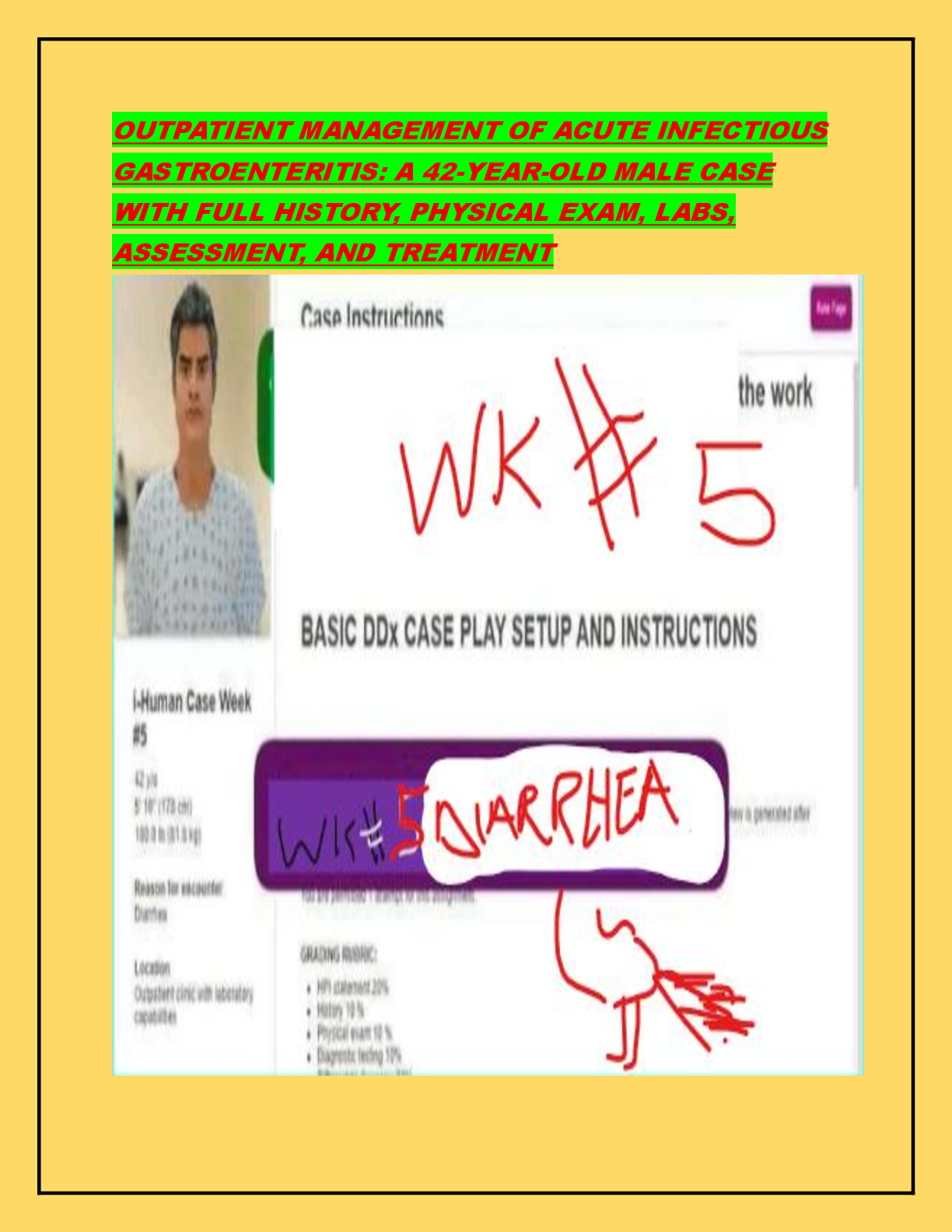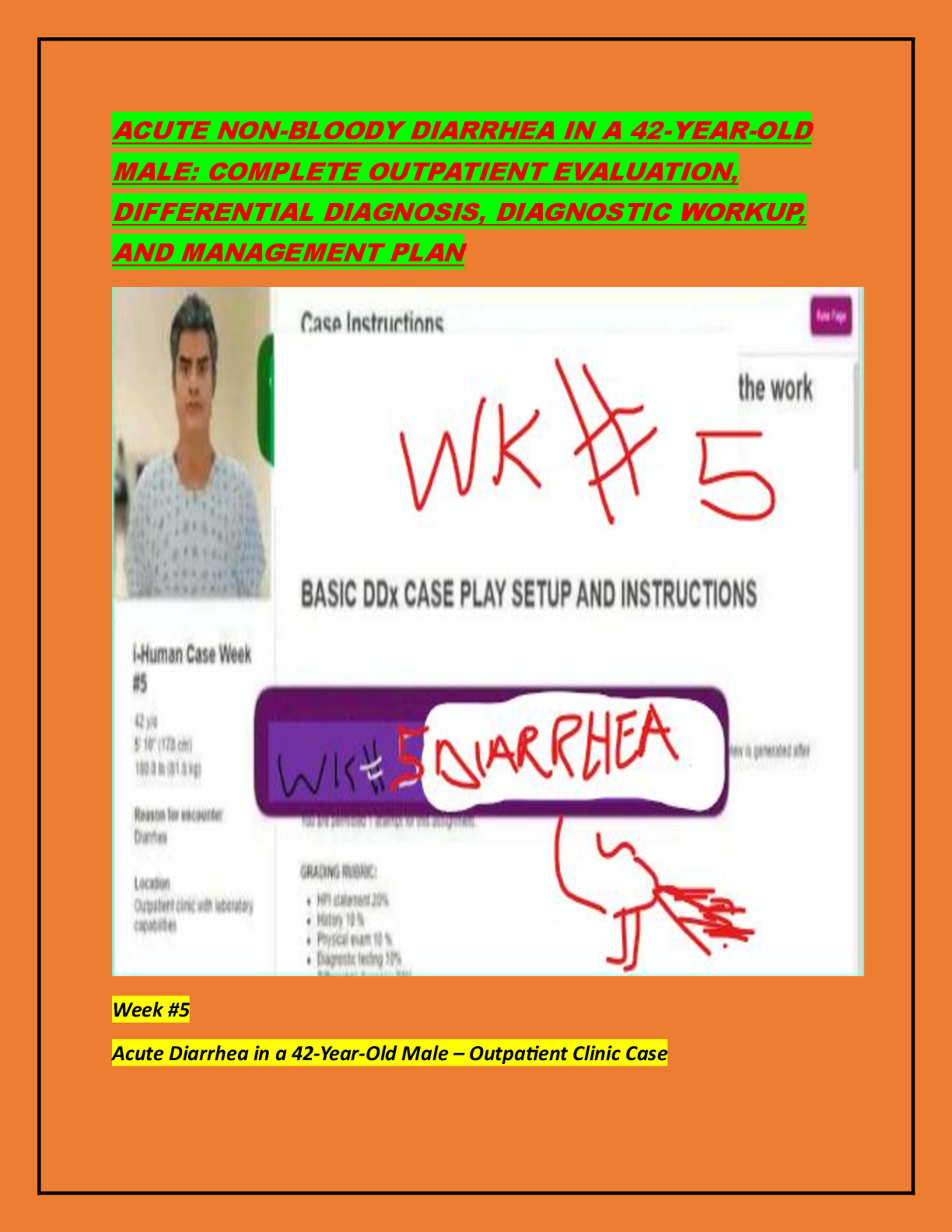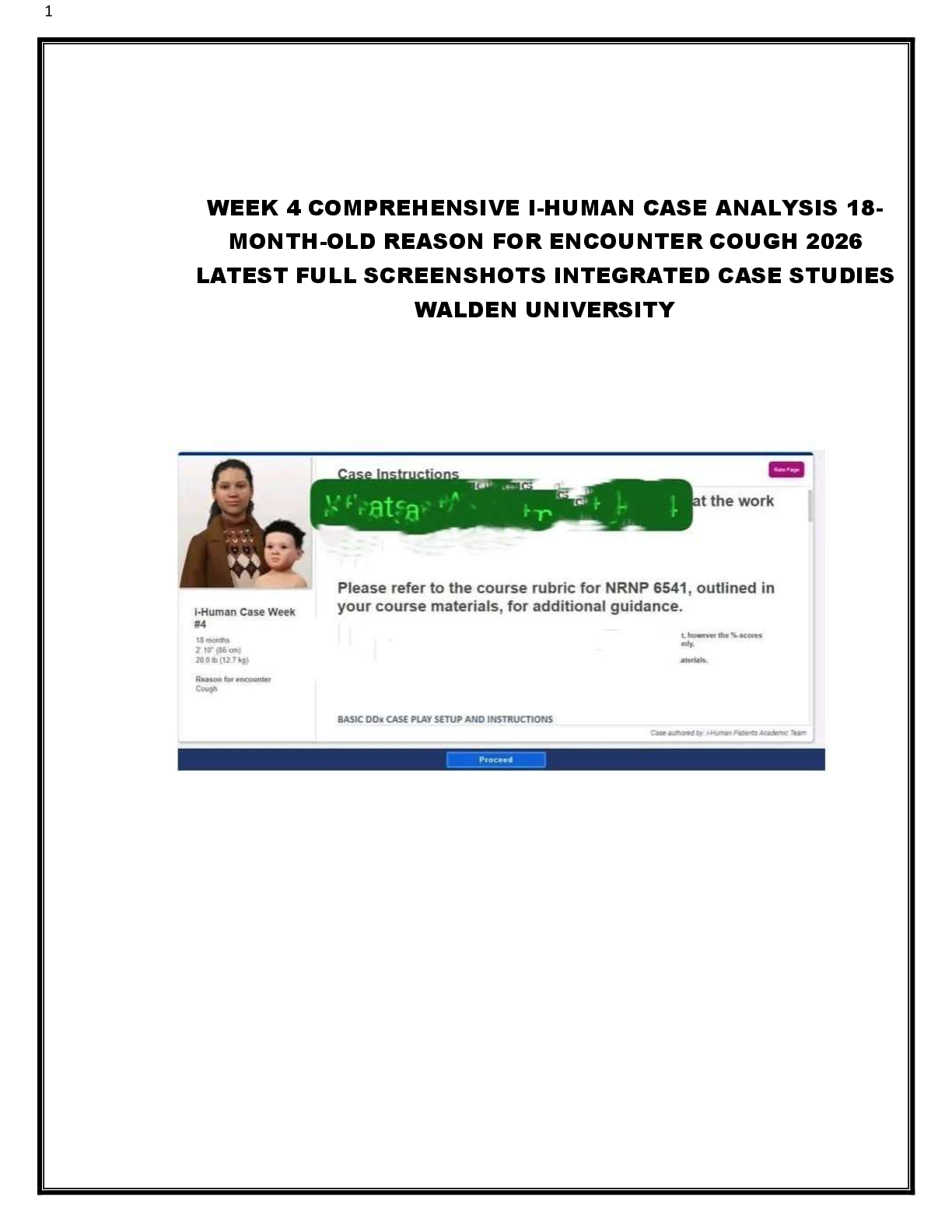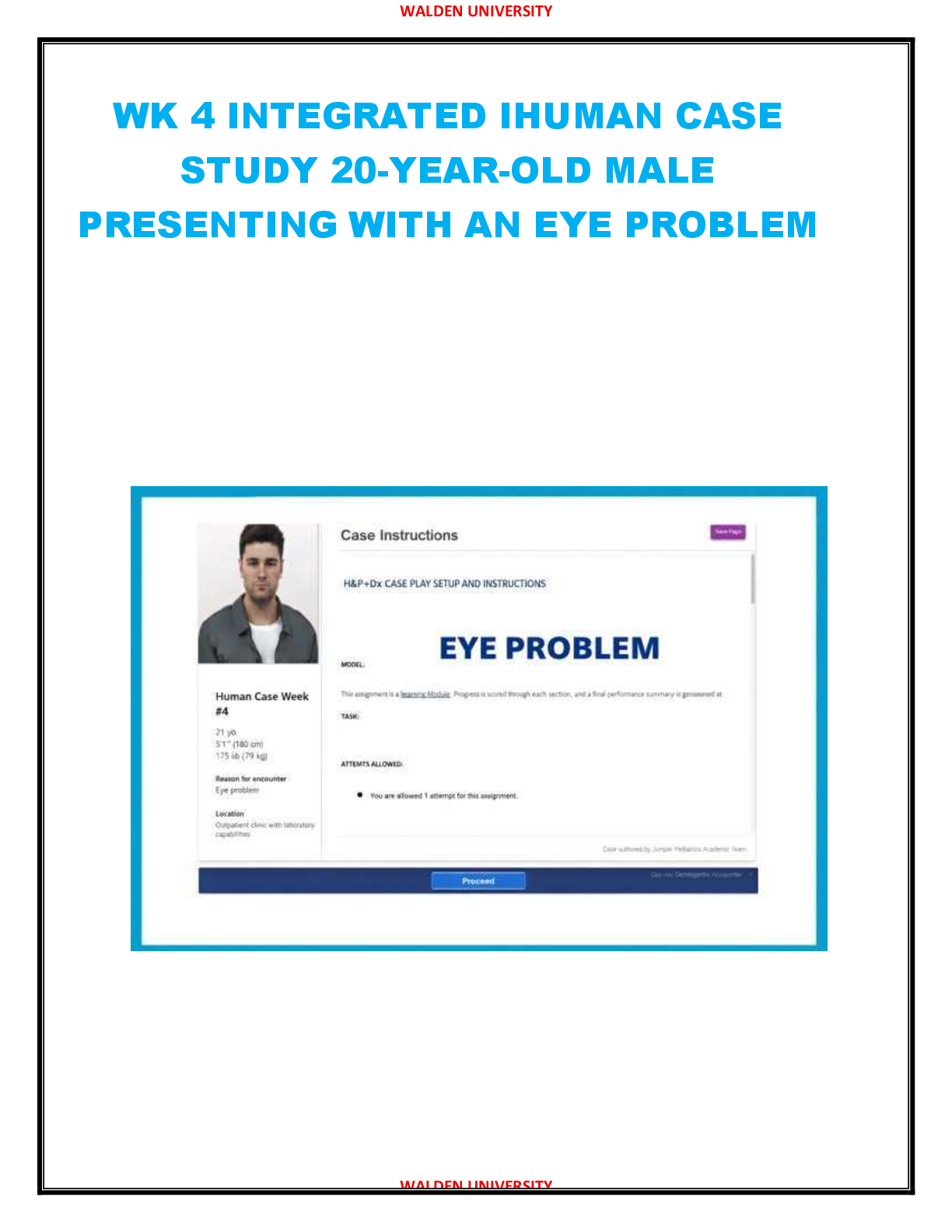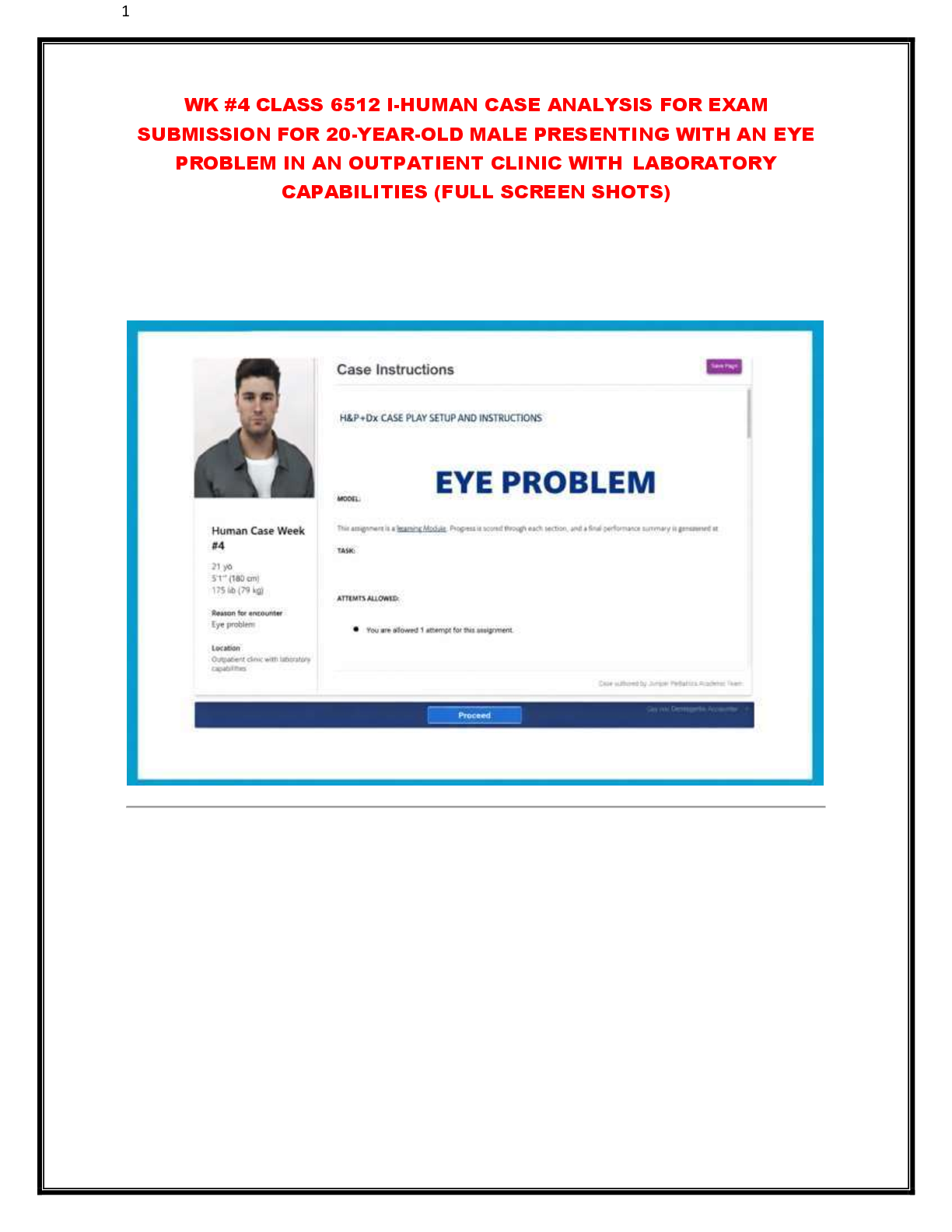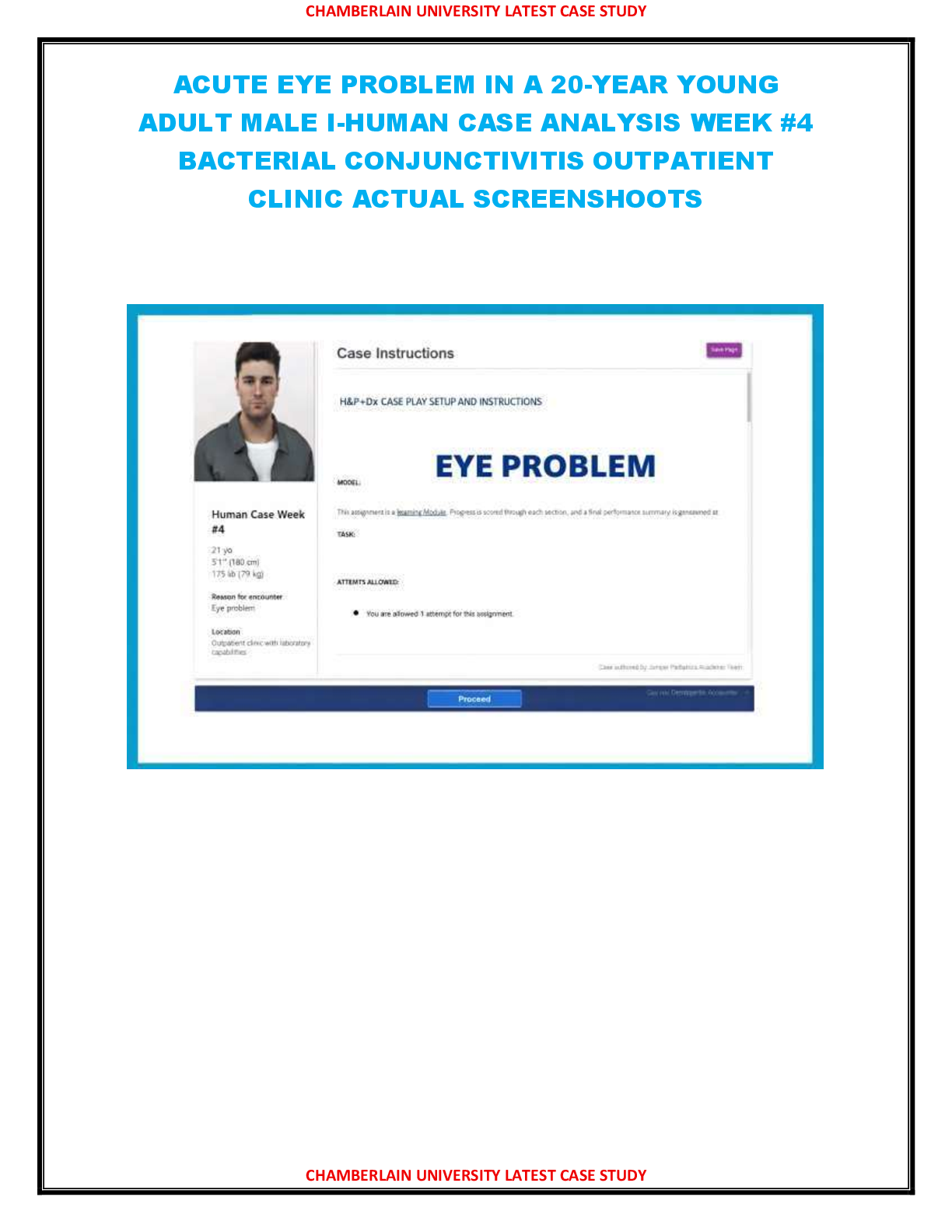Anatomy > CASE STUDY > BIOS 256 Week 5 Case Study: Fluid and Electrolyte, Acid-Base (GRADED A) (All)
BIOS 256 Week 5 Case Study: Fluid and Electrolyte, Acid-Base (GRADED A)
Document Content and Description Below
Week 5 Case Study: Fluid and Electrolyte/Acid-Base BIO256: Anatomy & Physiology IV w/Lab 1. Understanding that HCl is produced in the stomach and that he has been vomiting his ... stomach contents, predict the acid/base imbalance that repeated vomiting will cause. Repeated vomit will cause metabolic alkalosis, a condition of primary bicarbonate excess. In the case of a 4-week-old excess vomiting results from pyloric or duodenal obstruction leading to saline responsive metabolic alkalosis. The vomiting and gastric aspirations cause hypovolemia, a contraction of extracellular fluid, and loss of sodium ion, Chlorine and Hydrogen ions from the body. The hypovolemia stimulates the renin- angiotensin-aldosterone system (RAAS). Thus, are leading to the release of aldosterone from the adrenal cortex. Thereby both stimulation of RAAS and release of aldosterone cause a decrease in glomerular filtration rate and increased renal retention of bicarbonate. Hence during vomiting, the bicarbonate ions enter the plasma in exchange for chloride ions lost due to vomiting. Thus, it leads to increased plasma bicarbonate levels and metabolic alkalosis. 2. Predict the effect on blood chloride level from repeated vomiting? In the infant case, repeated vomiting is due to pyloric stenosis. Thereby food in the infant's stomach cannot cross the stomach's pylorus and reach the duodenum for further digestion. This causes accumulation of food in the stomach's pyloric region, resulting in vomiting receptors being stimulated, which leads to vomiting of gastric contents like hydrogen and Chlorine ions. Since there is a loss of Chlorine ions from the body through vomitus, the infant will have a low level of chloride ions in the body. The low Chloride content in the body leads to hypochloremia. Which further increase the pH. 3. "Normal saline" is often used to treat dehydration. What does it mean for the saline to be "normal"? Normal saline means 0.9% sodium chlorine solution, which means 0.9g of sodium chlorine (NaCl) present in 100 mL of water. Thereby,0.9% saline solution is called normal saline because its composition of 0.9g of NaCl in 100 mL of water is similar to our body fluids' salt concentration. 4. Research to discover signs or symptoms of dehydration. List 3. Excess vomiting of gastric contents can lead to dehydration due to the body's loss of water and electrolytes. In addition, this loss of water and electrolytes from the body can cause the following symptoms: Dry mouth and lips: Due to decreased plasma volume in dehydration, enough plasma volume is not present in the body to produce the required amount of saliva. This leads to decreased saliva production, which causes dry mouth. Decreased urine production: Due to decreased plasma volume in the body, renal blood flow decreases. This will leads to less ultrafiltration which will eventually lead to less amount of urine. Less urine formation leads to less urine excretion. Increased thirst: The body water decreases, and electrolytes composition stimulates osmoreceptors in the hypothalamus, stimulating thirst centers. Stimulation of the thirst center causes an increased intake of water and electrolytes to restore fluid body volume. 5. Explain how an alteration in respiratory rate can compensate for an acid-base imbalance. By varying the rate of ventilation, the level of bicarbonate ion in blood is reduced which alter the pH. In case of metabolic alkalosis, the respiratory compensation cause hypoventilation which increase the accumulation of carbon dioxide in blood and reduce the pH which is increased due to bicarbonate ion. An opposing Effect occur in metabolic acidosis which result in hyperventilation and increase the pH of blood. Thereby,the normal response of the respiratory system to elevated pH is to increase the amount of carbon dioxide in the blood by decreasing the respiratory rate to conserve carbon dioxide. There is a limit to the decrease in respiration, however, that the body can tolerate. Hence, the respiratory route is less efficient at compensating for metabolic alkalosis than for acidosis. References: Saladin, K. S. (2020). Anatomy & Physiology: The Unity of Form and Function (9th Edition). McGraw-Hill Higher Education (US). Hopkins, E. (2020, September 14). Physiology, acid-base balance. StatPearls [Internet]. https://www.ncbi.nlm.nih.gov/books/NBK507807/. Biga, L. M., Dawson, S., Harwell, A., Hopkins, R., Kaufmann, J., LeMaster, M., Matern, P., Morrison-Graham, K., Quick, D., & Runyeon, J. (n.d.). 26.5 disorders of Acid-base Balance. Anatomy Physiology. https://open.oregonstate.education/aandp/chapter/26-5-disorders- of-acid-base-balance/. U.S. National Library of Medicine. (2021, July 28). Dehydration. MedlinePlus. https://medlineplus.gov/dehydration.html. [Show More]
Last updated: 3 years ago
Preview 1 out of 6 pages

Buy this document to get the full access instantly
Instant Download Access after purchase
Buy NowInstant download
We Accept:

Also available in bundle (1)
Click Below to Access Bundle(s)

BIOS 256 Coursework Week 1 – 8 BUNDLE (100% CORRECT SOLUTIONS)
BIOS 256 Week 1 Case Study: Upper GI BIOS-256 Week 1 OL Lab 1: Carbohydrates The sugars that feed us BIOS 256 Week 1 Discussion: The Digestive System – Liver BIOS-256 Week 1 Discussion: The Digesti...
By Prof. Goodluck 3 years ago
$14.5
24
Reviews( 0 )
$11.00
Can't find what you want? Try our AI powered Search
Document information
Connected school, study & course
About the document
Uploaded On
Aug 31, 2022
Number of pages
6
Written in
All
Additional information
This document has been written for:
Uploaded
Aug 31, 2022
Downloads
0
Views
169



